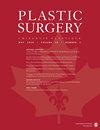减少整形手术中无抗凝治疗的静脉血栓栓塞:风险识别、风险修改和风险降低的范例
IF 0.6
4区 医学
Q Medicine
引用次数: 0
摘要
静脉血栓栓塞(VTE)是一个重要的患者安全问题,也是整形手术后可能发生的危及生命或肢体的并发症。根据以患者为中心和手术特定的风险,患者的静脉血栓栓塞风险水平不同。以下综述讨论了整形手术中静脉血栓栓塞风险识别、风险调整和风险降低的范例,最终目的是降低静脉血栓栓塞风险,提高患者安全。本文章由计算机程序翻译,如有差异,请以英文原文为准。
Decrease Venous Thromboembolism Without Anticoagulation in Plastic Surgery: The Paradigm of Risk Identification, Risk Modification, and Risk Reduction
Venous thromboembolism (VTE) is an important patient safety issue and potentially a life or limb threatening complication that can occur following plastic surgery. Patients are at different levels of VTE risk, based on patient-centric and procedure-specific risks. The following review discusses the paradigms of risk identification, risk modification and risk reduction for VTE risk in plastic surgery, with an ultimate goal of reducing VTE risk and improving patient safety.
求助全文
通过发布文献求助,成功后即可免费获取论文全文。
去求助
来源期刊

Plastic Surgery
SURGERY-
CiteScore
0.67
自引率
0.00%
发文量
0
审稿时长
6-12 weeks
期刊介绍:
Plastic Surgery (Chirurgie Plastique) is the official journal of the Canadian Society of Plastic Surgeons, the Canadian Society for Aesthetic Plastic Surgery, Group for the Advancement of Microsurgery, and the Canadian Society for Surgery of the Hand. It serves as a major venue for Canadian research, society guidelines, and continuing medical education.
 求助内容:
求助内容: 应助结果提醒方式:
应助结果提醒方式:


